The wildest of the monkey troops I work with is the la Pago troop. They are the only troop out of the three that live completely in the forest, never venturing into the farmland so they’re of particular interest as they offer a glimpse of truly wild behaviour.
It’s a fair trek to get in to the area of forest they live in. Me and my guide Ludin trek in from the road through ever denser forest.
It’s a nice trek with only a few hills! On a recent trek in we decided to take a different route and came across a local sacred site known as ‘rumah fobula’, or ‘house of the white mango’. It’s quite an amazing place. It appears out of nowhere on a hill, suddenly the forest gives way to a patch of rattan palms and then what looks like a perfectly cleared farm with a small hut and a pair of stone graves. Behind the farm is a large, gnarled and twisted old mango tree – the White mango.
Local Legend has it that a long time ago one of the Sultan’s of Buton came to this place after escaping persecution. He and his wife arrived with nothing but one mango and one sheath of rice seedlings. They ate the mango and let the seeds drop to the forest floor where a new mango tree grew. When the mango fruited though the fruits were white skinned, not green and yellow like normal mangoes. The one sheath of rice was not enough to plant out a full farm but he began to plant it anyway and from that one sheath a hectare of rice plants grew. To this day the locals say that when the mango fruits, the fruits are still white (sadly it wasn’t mango season while I was there to see this!). After these two miracles became known to local people they would come to the Sultan to ask for blessings. After the Sultan and his wife died they were buried in the farm.
Their graves are still visited today. Anyone who comes to this site must remove their shoes before entering the farm and contribute to keeping the area clean and clear of weeds etc.
Local people come before the harvest time to wish for good harvests, to ask for help when loved ones are sick and to wish for children or whatever it is they desire. They come with a village elder bringing water to be blessed and a small amount of food. It’s said no matter how little food you bring there will always be plenty for everyone when it comes to eating it in this place. They sit in the farm hut and offer prayers and bless the water and then return to the village.
The whole village also come here after the cashew harvest. If it has been a good year they bring some of the harvest as thanks. They spend the morning here then return to the village for ‘Pesta Panen’ or harvest party where they share food and drink and dance the night away to celebrate the cashew harvest. 🙂
So after that interesting little detour we carried on into the forest looking for the monkeys. First we had to avoid the rattan though! And other vicious plants!
All the while keeping our eyes peeled for monkeys. There are some amazing sights though – huge epiphytic ferns, massive fig trees, flowering lianas, more cool fungi!
There’s other wildlife too – squirrels, eagles, parrots, woodpeckers, hornbills, cuscus (basically a marsupial sloth!), spiders, cool caterpillars, moths, lizards, snakes!
My two other guides La Mimi and La Tilili go ahead to try to track down the monkeys and we communicate via radio.
We split up to try to find them and keep our eyes on the tree tops.
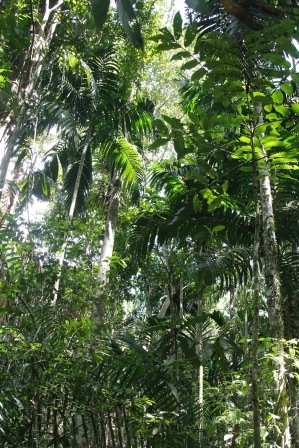
We also look for signs like the smell of monkeys in an area (yes they have a very distinctive smell!) and monkey poop on the forest floor (if we can find it before the dung beetles do!).

It can take hours to find the monkeys so we take lunch with us and chill out in the forest eating it. It’s always a good opportunity for the guys to collect some rattan and make some of their traditional brackets too 🙂
You have to be careful though not to pick up any hitchhikers at these stops!
When we finally find the monkeys we take a gps reading to record their location then start recording their behaviour, what they’re eating and where they are every 20 mins.
Unlike the Kawelli troop who spend most of their time on the ground or in farms, these monkeys are usually high up in the canopy. So most of the views of them are mainly of their bottoms! But it’s still exciting nevertheless 🙂
We follow them as long as we can, until we lose them or it gets dark. Then we head back – either to camp in the forest or back to the village. There’s always a chance to appreciate some of the majesty of the forest on the way back! 🙂
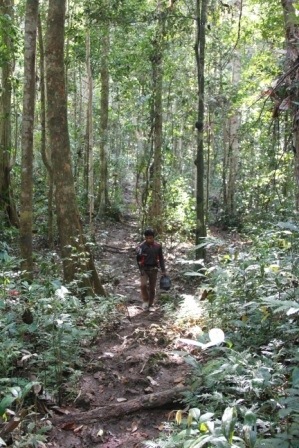
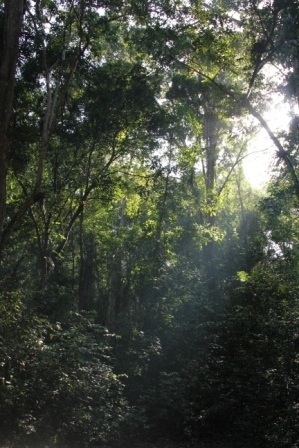
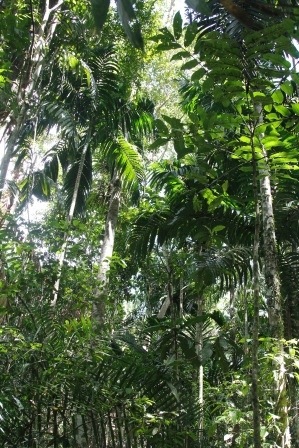
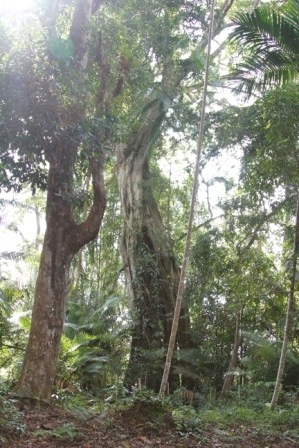








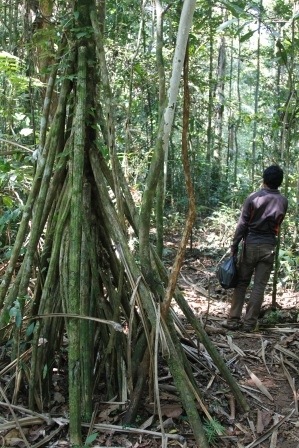

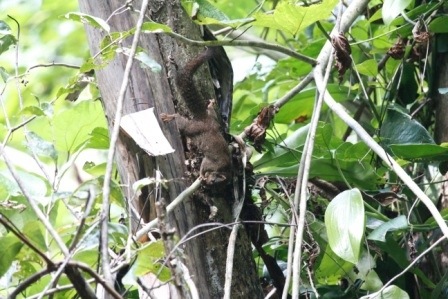

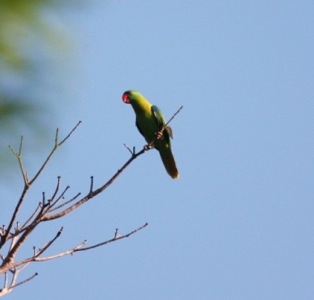


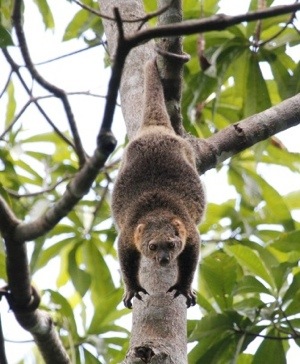
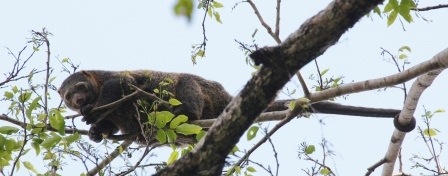
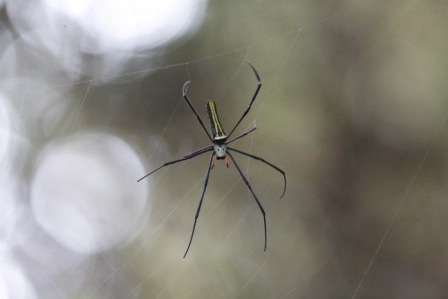
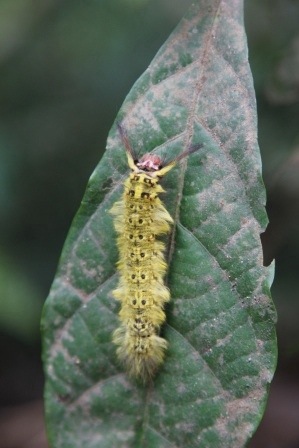
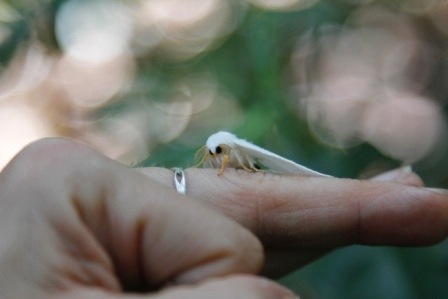



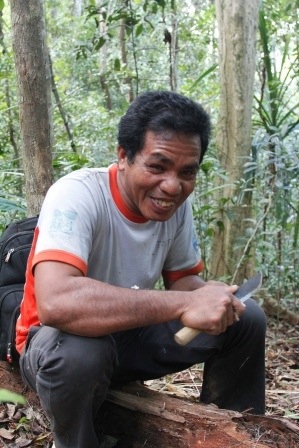






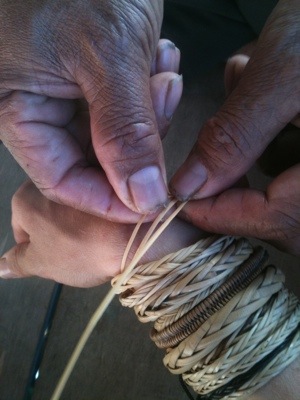
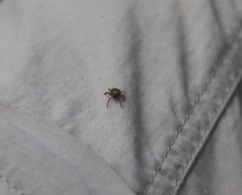

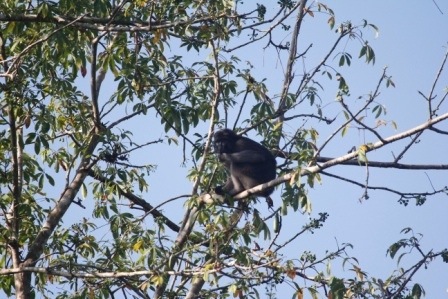
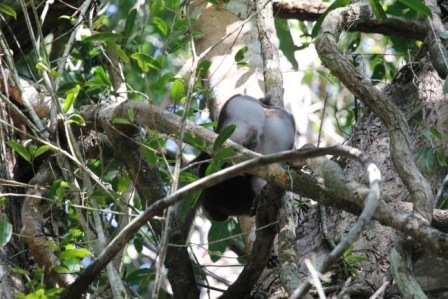


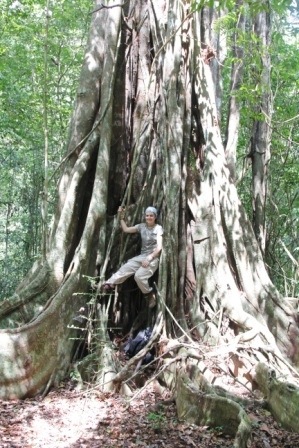
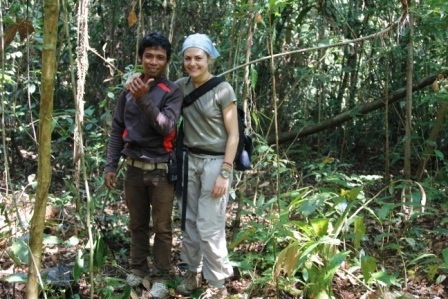
Leave a comment